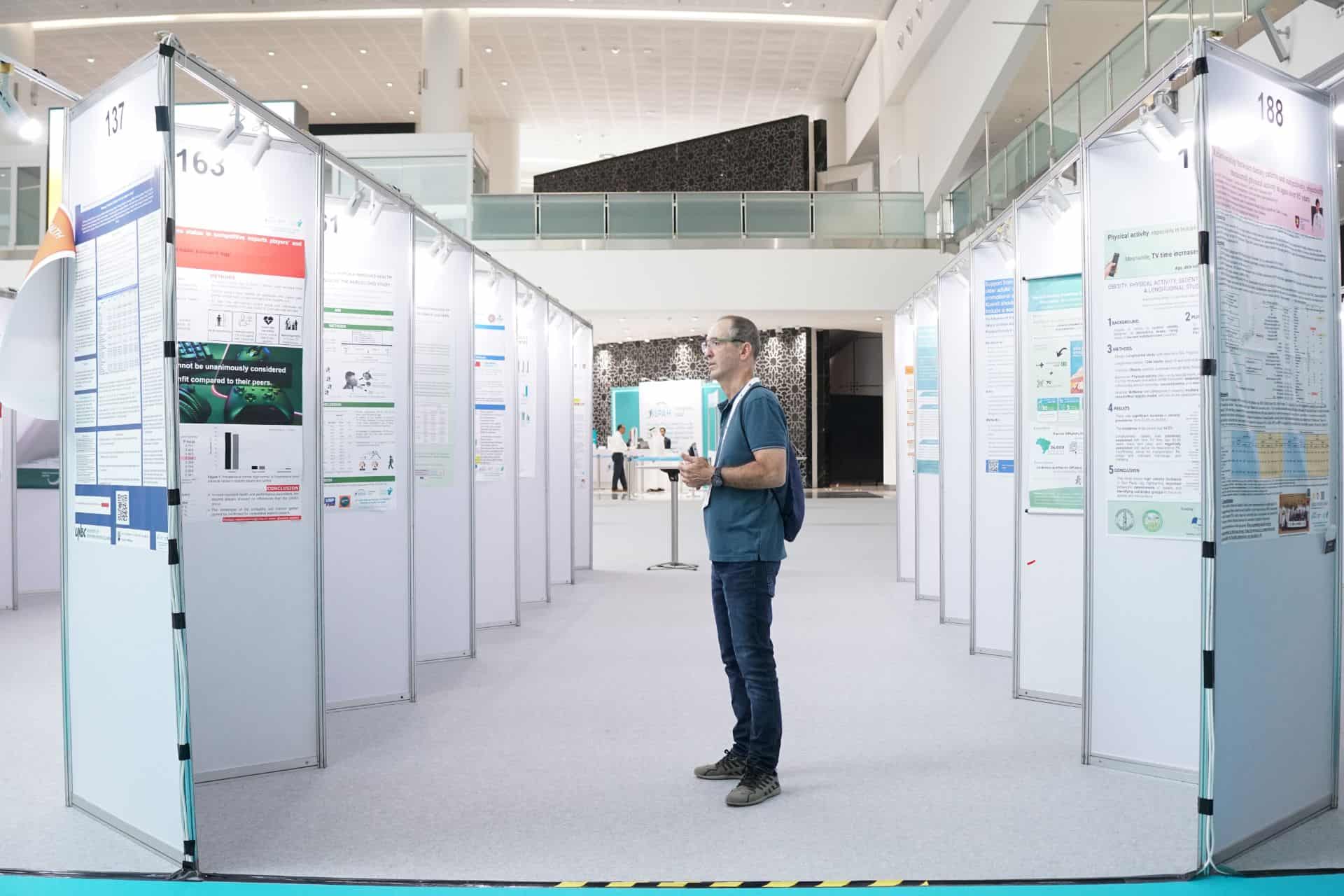E-poster
6-wk Metabolic Effects of Active Breaks to Sitting vs Continuous Walking in Adults with Overweight/Obesity
Background: Short, frequent active breaks to sedentary behavior (SB) lead to greater reductions in postprandial glucose and insulin responses compared to a continuous bout of activity in adults over the short-term (4d). The longer-term effects of active breaks to SB are unknown.
Purpose: To compare effects of active breaks to SB vs continuous walking physical activity (PA) and SB on markers of glucose metabolism in adults with overweight/obesity.
Methods: In a 6-wk randomized trial, 28 sedentary adults with overweight/obesity (15F/13M, 34±8 yr, 29.6±3.3 kg/m2) were randomized to: BREAK, 9 hourly 5-min brisk walking bouts, 5 d/wk; or ONE, single 45-min brisk walking bout, 5 d/wk. Habitual PA/SB and glycemic variability were assessed with ActiGraph GT3X and ActivPAL, and continuous glucose monitors for 14d. Fasting and postprandial glucose and insulin, and fasting lipid profile were assessed during 23-h study visits. Group-by-time interaction for dependent variables were tested using linear mixed effect models.
Results: Both groups increased time in moderate-to-vigorous PA (+22.5 min/d; time: p=0.001). Although total sedentary time did not change (time: p=0.097), BREAK reduced time in prolonged sitting bouts >60min (-1.1 h/d; group*time: p=0.018). Both groups improved fasting insulin concentrations (-17%; time: p=0.016) and insulin sensitivity (-15%; time: p=0.042). Fasting LDL concentrations decreased in BREAK (-12%; group*time: p=0.032). Several indices of glycemic variability were decreased in BREAK but not in ONE (group*time: all p<0.086).
Conclusions: Both interventions increased PA and improved insulin sensitivity. However, breaking up SB was more effective at reducing prolonged SB and lowering glycemic variability and fasting LDL concentrations than continuous walking.
Practical implications: Both types of physical activity improve insulin sensitivity. Breaking up SB should be considered over continuous walking when targeting improvement in glucose control for people at risk for type 2 diabetes.
Funding: NIH (R00DK100465 and F31DK125061), NIH/NCATS Colorado CTSA (UL1TR002535), and NORC (P30-DK48520).
Submitting Author
Ana Pinto
Population Group
Adults
Study Type
Intervention
Setting
Community


